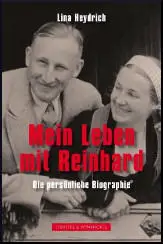Lina Heydrich
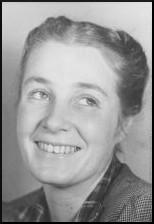
Lina Mathilde von Osten, the daughter of a schoolteacher, was born in Fehmarn, Germany, on 14th June, 1911.According to Richard Evans, the author of The Third Reich in Power (2005), Lina "held strong Nazi convictions and had family connections with the SS chief in Munich". (1) This was Karl von Eberstein. Lina joined the National Socialist German Workers Party (NSDAP) in 1929 (2)
Lina met Reinhard Heydrich on 6th December, 1930. The couple quickly fell in love but at the time Heydrich was seeing other women. According to his friend, Walter Schellenberg, "Heydrich's only weakness was his ungovernable sexual appetite. To this he would surrender himself without inhibition or caution and the calculated control which characterised him in everything he did left him completely." (3) As Adrian Weale has pointed out: "In December 1930, he became engaged to Lina von Osten, the beautiful, blonde, nineteen-year-old daughter of a schoolteacher from the island of Fehmarn, in the Baltic. Shortly thereafter, though, a previous girlfriend appeared and claimed he had already proposed to her - after they had spent the night together in a hotel." (4)
Lina's relationship with Reinhard Heydrich
Heydrich vigorously refuted the woman's claims, but her father, a successful shipbuilder, complained to the Commander-in-Chief of the German Navy, Grand Admiral Erich Raeder, and in May 1931 a Naval Court of Honour was convened to examine Heydrich's behaviour. Although he defended himself before the court with a "confidence that bordered on arrogance" he was dismissed for "impropriety". Heydrich's dismissal came when he was just a few weeks short of being eligible for a naval pension. Heydrich later claimed that he had been dismissed on "political grounds".
Edouard Calic, the author of Himmler and the SS Empire (2009), points out that Reinhard Heydrich joined the National Socialist German Workers Party (NSDAP) in Hamburg on 31st May, 1931.(5) With the help of Lina's family friend, Karl von Eberstein, Heydrich was able to obtain a meeting with Heinrich Himmler. It has been claimed that he was impressed by Heydrich's "Nordic" appearance. However, Karl Wolff, claims this was not true as he was considered "womanly and unGermanic."
Peter Padfield, the author of Himmler: Reichsfuhrer S.S. (1991), agrees: "Heydrich fell short of the strict Nordic ideal; his hips were too wide.... There was also a Mongolian cast to his eyes which caused Himmler when annoyed to rebuke him with descent from the hordes of Genghis Khan. It was an apt comment. Even his photographs convey an impression of cruelty; the long, asmmetric face, thick lips and slightly inclined, icy grey-blue eyes suggest something both infinitely calculating and diabolic." (6)
The Nazi Party decided to have its own intelligence and security body and so Himmler was asked to create the SD (Sicherheitsdienst). On 1st August, 1931, Heydrich became the head of the organization and it was kept distinct from the uniformed SS (Schutzstaffel). It has been claimed that Heydrich got the job because of his experience in Naval intelligence. However, Mark M. Boatner III has argued that Himmler had made his decision "not realizing he had been in signals, not naval intelligence." (7) Heydrich's fast task was to carry out an investigation of the SS: "The Security Service itself had its origins in reports early in 1931 that the Nazi Party had been infiltrated by its enemies. Himmler established the Security Service to investigate the claims." (8)
Marriage
At first Reinhard Heydrich had few resources to carry out his work. According to Andrew Mollo, the author of To The Death's Head: The Story of the SS (1982): "On a kitchen table, with a borrowed typewriter, a pot of glue, scissors and some files, Heydrich, now leader of the Security Service (Leiter des Sicherheitsdienstes), aided by his landlady and some out-of-work SS men, began to gather information on what the Nazis referred to as the 'radical opposition'. Top of the list were the political churches, Freemasons, Jews and Marxists. A titillating side-line was homosexuality and 'mattress affairs' both inside and out of the Nazi Party. Heydrich then toured the SS regional commands throughout Germany, and on his return began to recruit men of his own age and background into the SD. In contrast to the typical Nazi 'Lumpenpack' Heydrich sought bright young university graduates whose career prospects had been dimmed by depression. It was these young intellectuals from good families who were to give the SD its peculiar character. (9)
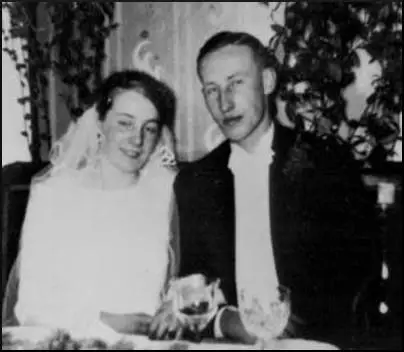
On 26th December, 1931, Reinhard Heydrich married Lina von Osten. In July 1932 he was promoted to Standartenführer-SS (full colonel) and became Himmler's valued chief of staff, and in this role helped develop the entire SS. During this period he developed good relationships with other powerful figures in the National Socialist German Workers Party (NSDAP) including Rudolf Hess and Martin Bormann.
Lina Heydrich gave birth to three children over the next few years: Klaus (17th June, 1933), Heider (23rd December, 1934) and Silke (9th April, 1939). During this period he became a senior figure in the Gestapo and continued to work closely with Heinrich Himmler. Another colleague, Walter Schellenberg who was able to observe both men at work has pointed out that Heydrich was the "hidden pivot around which the Nazi regime revolved.... He was far superior to all his political colleagues and controlled them as he controlled the vast intelligence machine of the SD." (10) However, Lina Heydrich claimed that he an an inferiority complex: "His apparent arrogance was no more than self-protection. Even with me he expressed no kind word, no word of tenderness". (11)
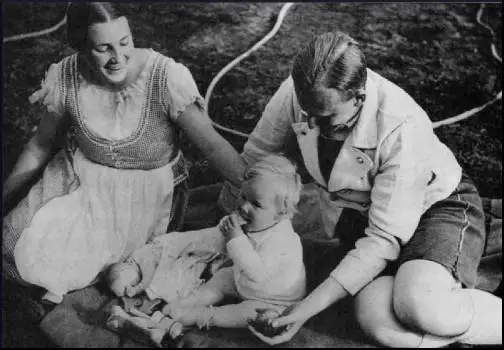
Lina Heydrich found life with Reinhard Heydrich difficult: "The most characteristic trait was that he (Reinhard Heydrich) was a man of few words. He never talked about something or discussed something just for the love of talk. Every word had to have a concrete meaning, or purpose, had to hit the point. Therefore he never said even one word more than necessary....My husband was vain. He hated nothing more than to be dressed inadequately. That did not apply to his wife. She might have worn the most impossible dresses, he thought them all right." (12)
Reinhard Heydrich and War Crimes
Michael Burleigh, the author of The Third Reich: A New History (2001), has argued that Heydrich was important in the decision to expand the concentration camp system in 1936: "Theodor Eicke built up a special guard formation called the Death's Head units, after the aluminum skull and cross-bones on the right collars... Strictly separated from the camp internal administration, which handled prisoners on a daily basis, these units were dual-purpose: to guard the perimeters, and to act as a heavily armed auxiliary police force in the event of civil disturbances during wartime. To that end, from 1936 onwards, Heydrich began assembling a card index on forty-six thousand people who would have to be immediately detained." (13)
Lina Heydrich claimed that her husband was hard on his staff: "In the morning, while being shaved, he worked at the new reports that had come in during the night... After breakfast during the 30 minutes ride to the office this reading was continued. He never let his staff had even a minute's rest, it was very hard and strenuous for them.... My husband never had time. He had lost the human measure. He always hurried his subordinates. He did not know any private or family life, and he did not estimate that of his fellow-workers. His life was the conditionless unconditional devotion to his task and that was what he expected from everyone." (14)
Wannsee Conference
On 31st July, 1941, Hermann Göring issued orders to Reinhard Heydrich to submit a comprehensive plan for "a final solution of the Jewish question." The meeting to discuss the plan, the Wannsee Conference, was held on 20th January 1942. Heydrich chaired the meeting and also in attendance were fifteen leading Nazi bureaucrats, including Heinrich Muller, Adolf Eichmann and Roland Friesler.
The conference was opened by Heydrich, who declared that he was the plenipotentiary for the "final solution of the Jewish question. He then reviewed the emigration problem. Heydrich admitted that there had been a plan to deport all Jews to the island of Madagascar but this had been abandoned after Operation Barbarossa. After discussing the matter with Adolf Hitler it had been decided to evacuate all Jews to the east. The evacuees would be organized into huge labour columns. He added that a majority would "fall through natural diminution". The survivors of this march would be dangerous because they had shown that they were strong and could in the future "rebuild Jewish life". Therefore they would be "regarded as the germ cell of a new Jewish development" and should be "treated accordingly."
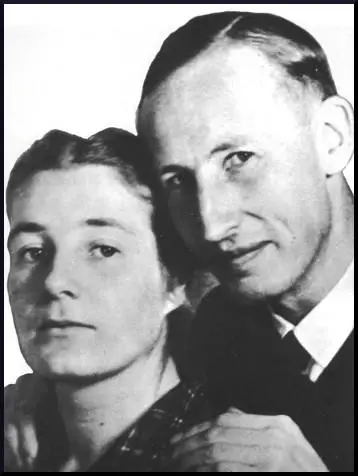
After this opening statement Adolf Eichmann gave the conference numbers of the Jews living in the occupied territories. This included Nazi occupied territories in Eastern Europe (3,215,500), Germany (131,800), Austria (43,700), France (865,000), Netherlands (160,800), Greece (69,600), Belgium (43,000), Denmark (5,600) and Norway (1,300). Eichmann also provided details of the Jews living in countries that the Nazis hoped to have control over during the next few years. This included the Soviet Union (5,000,000), Hungary (742,000), Britain (330,000), Romania (342,000), Turkey (55,000), Switzerland (18,000), Sweden (8,000), Spain (6,000), Portugal (3,000) and Finland (2,300).
At the end of the meeting the Wannsee Protocol was circulated in the ministries and SS offices about the Final Solution. It included the following: "As a further possibility of solving the question, the evacuation of the Jews to the east can now be substituted for emigration, after obtaining permission from the Führer to that effect. However, these actions are merely to be considered as alternative possibilities, even though they will permit us to make all those practical experiences which are of great importance for the future final solution of the Jewish question. The Jews should in the course of the Final Solution be taken in a suitable manner to the east for use as labor. In big labour gangs, separated by sex, the Jews capable of work will be brought to these areas for road building, in which task undoubtedly a large number will fall through natural diminution. The remnant that is finally able to survive all this - since this is undoubtedly the part with the strongest resistance - must be treated accordingly, since these people, representing a natural selection, are to be regarded as the germ cell of a new Jewish development, in case they should succeed and go free (as history has proved). In the course of the execution of the Final Solution, Europe will be combed from west to east." (15)
From that date the extermination of the Jews became a systematically organized operation. It was decided to establish extermination camps in the east that had the capacity to kill large numbers including Belzec (15,000 a day), Sobibor (20,000), Treblinka (25,000) and Majdanek (25,000). It has been estimated that between 1942 and 1945 around 18 million were sent to extermination camps. Of these, historians have estimated that between five and eleven million were killed.
Lina Heydrich blamed her husband's relationship with Adolf Hitler for these decisions: "He required absolute obedience as he himself obeyed without questioning.... . Orders from Hitler were obeyed absolutely. My husband saw in him the one great man. I sometimes ask myself what his thoughts would have been if he had seen the bitter end. He thought him to be the one and only being who could lead the German nation to greatness and glory." (16)
The Death of Reinhard Heydrich
On 27th September 1941, Reinhard Heydrich took up his post as Reich Protector of Bohemia and Moravia. Five days later he announced that the SS intended to "Germanize the Czech vermin." (17) Czech men, women and children were killed in large-scale executions, many staged dramatically in public. These actions resulted in a new nickname, the "Butcher of Prague".
In September, 1941, President Eduard Beneš, the head provisional Czechoslovakian government based in London approached Colin Gubbins, the director of operations of Special Operations Executive (SOE) about the possible assassination of Reinhard Heydrich. "Colonel Moravec enquired whether SOE would help in this project by providing facilities for training and supplying any special weaponry that was required. Gubbins had no hesitation in agreeing, but decided to restrict the knowledge of the Czech approach, and above all of the identity of the probable target, to a very small circle.... Acts of terrorism fell within SOE's charter and, as a senior official of the Sicherheitsdienst, Heydrich was a legitimate target. Moreover, in the last resort Benes and the Czech government were free to do what they liked in their own country without having to seek British approval. However, Gubbins pointed out to Moravec that an assassination of this sort was a purely political act which, even if unsuccessful, would result in wholesale reprisals for which, in his view, there was insufficient military justification." (18)
Stewart Menzies, the head of MI6 gave permission for Gubbins to organize the assassination of Reinhard Heydrich. This was the only Nazi leader that the Allies attempted to assassinate. They took this decision knowing that the German Army would take terrible retribution of the people of Czechoslovakia. (19) Interestingly, Gubbins did not tell the Prime Minister Winston Churchill and the Foreign Secretary Anthony Eden about the plot. Eden was especially opposed to this kind of action that he described as this "war crimes business".
The Czech secret service in England provided British-trained assassination agents Jan Kubis and Jozef Gabčík. The two-man team, codenamed Anthropoid, parachuted into the Bohemian hills on 29th December 1941. The drop was over Nehvizdy, a village five miles south of Pilsen. (20) During the time needed to recruit the team they studied Heydrich's movements and habits. He always used the same routes between his country estate at Hradcany Castle and the airport. He always sat in the front seat of his powerful Mercedes car with Klein, the SS driver. Heydrich also did not use a bodyguard or armed escort. (21)
On 23rd May 1942, the Czech underground gave Kubis and Gabčík, Heydrich's schedule for 27th May. "Meanwhile a perfect place for an ambush had been found. It was in the Holesovice suburb were Heydrich's car would have to slow for a right turn from Kirchmayer Blvd toward Troja Bridge and the center of Prague. With time for working out details of their plan Kubis and Gabčík formed their team. Josef Valcik would be on the boulevard about 100 yards from the turn, and he would flash a pocket mirror (pretending to comb his hair) when the victim came into sight. Rena Fafek, Gabcik's girlfriend, would be driven through the turn ahead of the big Mercedes and signal (by wearing a hat or not) whether the team had to deal with two cars or just one. Adolf Opalka was on the left-hand sidewalk across the street from the hit men; Kubis was on the corner watching Valcik:a few yards from him on the right sidewalk, were Gabčík and three other parachutists, Jaroslt Svarc, Josef Bublik, and Jan Hruby.... Just after 10:30 the Anthropoids got the signals: Valcik flashed his mirror, and the lady partisan came through the turn bareheaded. As the unsuspecting Germans followed, a streetcar clanged up from the Troja Bridge to a transfer point on the boulevard. Klein had to slow further for a couple of indecisive pedestrians, then he slammed on the brakes to avoid hitting a man who darted into the street. It was Josef Gabčík who whipped a Sten gun from under his rain coat, leveled it at Heydrich's chest, and calmly pulled the trigger. Nothing happened!" (22)
Heydrich and Klein both stood up and opened fire at Gabčík. Kubis then stepped forward a threw lobbed a grenade at the car. Heydrich was taken to the local hospital, where he underwent an emergency operation. The wound in his side did not appear to be life-threatening, but was full of debris - bits of metal and car upholstery to include cloth, leather, and horsehair near the spleen. Heydrich was reported to be recovering well, but developed blood poisoning and died of septicemia on 4th June 1942. (23)
Death of Klaus Heydrich
A fourth child, a daughter named Marte, was born on 23rd July, 1942, a month after her husband's death. Lina's two sons, Klaus and Heider, were cycling on 24th October, 1943. They were hit by a small truck and Klaus died from his injuries later that afternoon.
Later Life of Lina Heydrich
Lina Heydrich married Finnish theatre director Mauno Manninen. She attempted to run Reinhard Heydrich’s former summer house on Fehmarn Island as a restaurant until it burned down in February 1969. (24) She gave interviews to several historians, including Shlomo Aronson, the author of Reinhard Heydrich (1971). Her autobiography, Leben mit einem Kriegsverbrecher, was published in 1976.
Lina Heydrich died on 14th August, 1985.
Primary Sources
(1) Peter Padfield, Himmler: Reichsfuhrer S.S. (1991)
There is little doubt that the Kiel naval station, intelligence and counter-intelligence section, still had active links with the Nazis, no doubt at all that Heydrich himself was kept up to date on Party affairs by his boyhood friend, now SA-Oberfuhrer Karl von Eberstein, who was a close colleague of Himmler. There seem therefore to be only two possibilities to account for his departure from the Navy. Either he transgressed the rule that serving officers did not attend political meetings - his new fiancee, Lina von Osten, was an enthusiastic Hitler supporter and he may perhaps have been foolish enough to attend a meeting with her. Alternatively his dismissal may have been a cover operation by Raeder to insert a naval officer into the intelligence apparatus of the Nazi Party just as large industrial concerns arranged for the 'dismissal' of men whom they wished to insert into the Nazi organisation to represent their interests - just as the great Junker landowners already had their men in leading positions in 'the Party'. The fact that Heydrich apparently received two years' severance or transitional salary at 200 Marks a month tends to support this latter theory.
(2) Richard Evans, The Third Reich in Power (2005)
Marrying his new girlfriend, Lina von Osten, who held strong Nazi convictions and had family connections with the SS chief in Munich, Karl Baron von Eberstein, Heydrich found new employment in the SS and was immediately set to work rooting out infiltrators. So thorough was he at this task that he convinced Himmler that the Security Service needed to widen the scope of its activities to become the core of a new German police and surveillance force. His intrusive investigations aroused the hostility of a number of old Nazis, including the Regional Leader of Halle-Merseburg, who riposted with the malicious allegation that Heydrich had Jewish ancestry in his blood. An investigation ordered by Gregor Strasser, Reich Organization Leader of the Nazi Party at the time, came to the conclusive finding that the allegations were untrue, though they continued to dog Heydrich for the rest of his career and have surfaced periodically since his death as well.
(3) Lina Heydrich, letter to Jean Vaughan (12th December, 1951)
The most characteristic trait was that he (Reinhard Heydrich) was a man of few words. He never talked about something or discussed something just for the love of talk. Every word had to have a concrete meaning, or purpose, had to hit the point. Therefore he never said even one word more than necessary.
He did not read much. Never did he read novels or philosophical books, eventually he read themes on scientific topics.
He never wasted a minute of his time. Every minute had to have is aim and purpose. Therefore he simply hated to go for a walk. Gymnastic exercise was not meant for a past-time or leisure, but for discipline, a training to reach the highest possible record in it. Therefore he always chose such sports to which he did not take naturally, but which required a hard training, self discipline. For instance, he was not at all gifted for fencing, but the end of its hard and enduring training was that he became German champion....
In the morning, while being shaved, he worked at the new reports that had come in during the night... After breakfast during the 30 minutes ride to the office this reading was continued. He never let his staff had even a minute's rest, it was very hard and strenuous for them....
My husband never had time. He had lost the human measure. He always hurried his subordinates. He did not know any private or family life, and he did not estimate that of his fellow-workers. His life was the conditionless unconditional devotion to his task and that was what he expected from everyone....
My husband was vain. He hated nothing more than to be dressed inadequately. That did not apply to his wife. She might have worn the most impossible dresses, he thought them all right.
He also was ambitious, ambition meant work and efficiency... He could deliver speeches or orations, but he could take part in discussions and then his logic was forceful.... His memory was astounding. He never needed a telephone directory. He knew by heart all the numbers he needed, he never forgot a single report that he had read. In this respect the most surprising stories are told about him.
Neither in his youth nor later on had he any personal friends. He also tried to avoid every social contact with neighbors or fellow workers. That was very hard on me. When I once asked him for the reason, he answered, "How can I be friends with any one, as I never can tell whether there might not perhaps arise the possibility of having him arrested one day!"
He distrusted every one and he was hardly ever mistaken in his judgment of persons. How often did he not say to me, "I don't know, there is something about this person that I don't like, if I would only know what's wrong with him." So my husband who seemed to be guided only by his logic and intelligence was in the end led by intuition. There was an immense danger in his development, that of human isolation.
He was easily irritated and got excited about the smallest matters such as wrongly filed reports, incorrectness in the behavior of adjutants, belated beginnings of public assemblies, and so on. But difficult problems in his work he solved without any signs of excitement. He was the man who passed the most dangerous cliff without difficulty, but whom a straw caused to stumble.
He required absolute obedience as he himself obeyed without questioning.... His way of living... was modest. He did not like pomp, nor to be the centre of a society. He loved good food, but he did not like splendid dinners. Receptions, state funerals, public affairs of every kind he just hated, and he tried to get away from them wherever he could. He smoked little and hardly ever took alcohol. When he did go out, he preferred to go incognito. His daily life was scheduled to the minute. He kept absolute silence as to office matters.
He never gave in before he had reached the aim he wanted to reach. If he did once mistrust a person, it was exceedingly difficult to convince him or to prove to him that this person did not earn this judgment....
Orders from Hitler were obeyed absolutely. My husband saw in him the one great man. I sometimes ask myself what his thoughts would have been if he had seen the bitter end. He thought him to be the one and only being who could lead the German nation to greatness and glory. Therefore it is good that my husband died in 1942. He has kept his faith and ideal.
I wrote you these items today because they just came to my mind. I am not always able to write, there are too hard and woeful memories connected with this.
References
(1) Richard Evans, The Third Reich in Power (2005) page 53
(2) Max Williams, Reinhard Heydrich: Volume 1 - The Road To War (2001) page 22
(3) Walter Schellenberg, The Memoirs of Hitler's Spymaster (2006) page 31
(4) Adrian Weale, The SS: A New History (2010) page 78
(5) Edouard Calic, Himmler and the SS Empire (2009) pages 58- 59
(6) Peter Padfield, Himmler: Reichsfuhrer S.S. (1991) page 111
(7) Mark M. Boatner III, Reinhard Heydrich (1996) page 216
(8) Richard Evans, The Third Reich in Power (2005) page 54
(9) Andrew Mollo, To The Death's Head: The Story of the SS (1982) pages 21-22
(10) Walter Schellenberg, The Memoirs of Hitler's Spymaster (2006) page 30
(11) Quoted in Shlomo Aronson, Reinhard Heydrich (1971) page 62
(12) Lina Heydrich, letter to Jean Vaughan (12th December, 1951)
(13) Michael Burleigh, The Third Reich: A New History (2001) page 200
(14) Lina Heydrich, letter to Jean Vaughan (12th December, 1951)
(15) Wannsee Protocol, (20th January 1942)
(16) Lina Heydrich, letter to Jean Vaughan (12th December, 1951)
(17) Mark M. Boatner III, The Biographical Dictionary of World War II (1996) page 215
(18) Peter Wilkinson and Joan Bright Astley, Gubbins & SOE (1993) pages 107-108
(19) Keith Jeffery, MI6: The History of the Secret Intelligence Service (2010) page 539
(20) Miroslav Ivanov, Target: Heydrich (1974) page 46
(21) Henri Michel, The Shadow War: European Resistance (1972) page 223
(22) Mark M. Boatner III, Reinhard Heydrich (1996) page 216
(23) Miroslav Ivanov, Target: Heydrich (1974) page 177
(24) Steven Lehrer, Wannsee House and the Holocaust (2000) page 196
Student Activities
Kristallnacht (Answer Commentary)
Adolf Hitler's Early Life (Answer Commentary)
Heinrich Himmler and the SS (Answer Commentary)
Trade Unions in Nazi Germany (Answer Commentary)
Adolf Hitler v John Heartfield (Answer Commentary)
Hitler's Volkswagen (The People's Car) (Answer Commentary)
Women in Nazi Germany (Answer Commentary)
German League of Girls (Answer Commentary)
The Assassination of Reinhard Heydrich (Answer Commentary)
The Last Days of Adolf Hitler (Answer Commentary)
_SIDEBAR_TOP
Forum Debates
Was Lenin working with Russian Secret Police?
Did Lenin arrange the killing of Rosa Luxemburg?
The Media and the Soviet Show Trials
Soviet Russia: Was their any Advantages?
Websites
Time Search: Spartacus Educational
Related Reading
Related Reading

